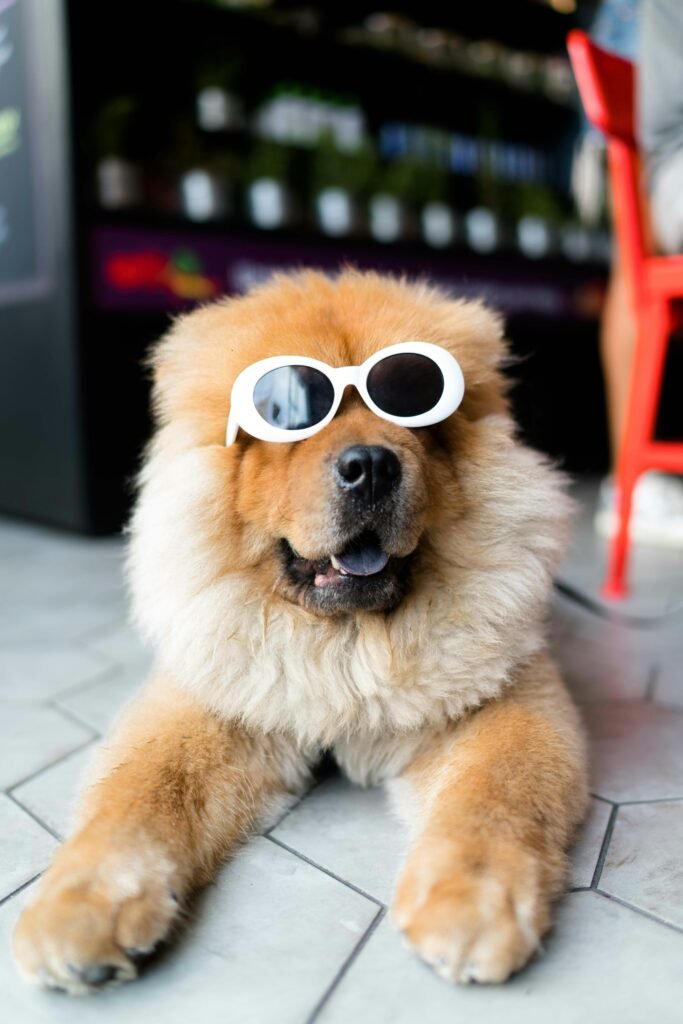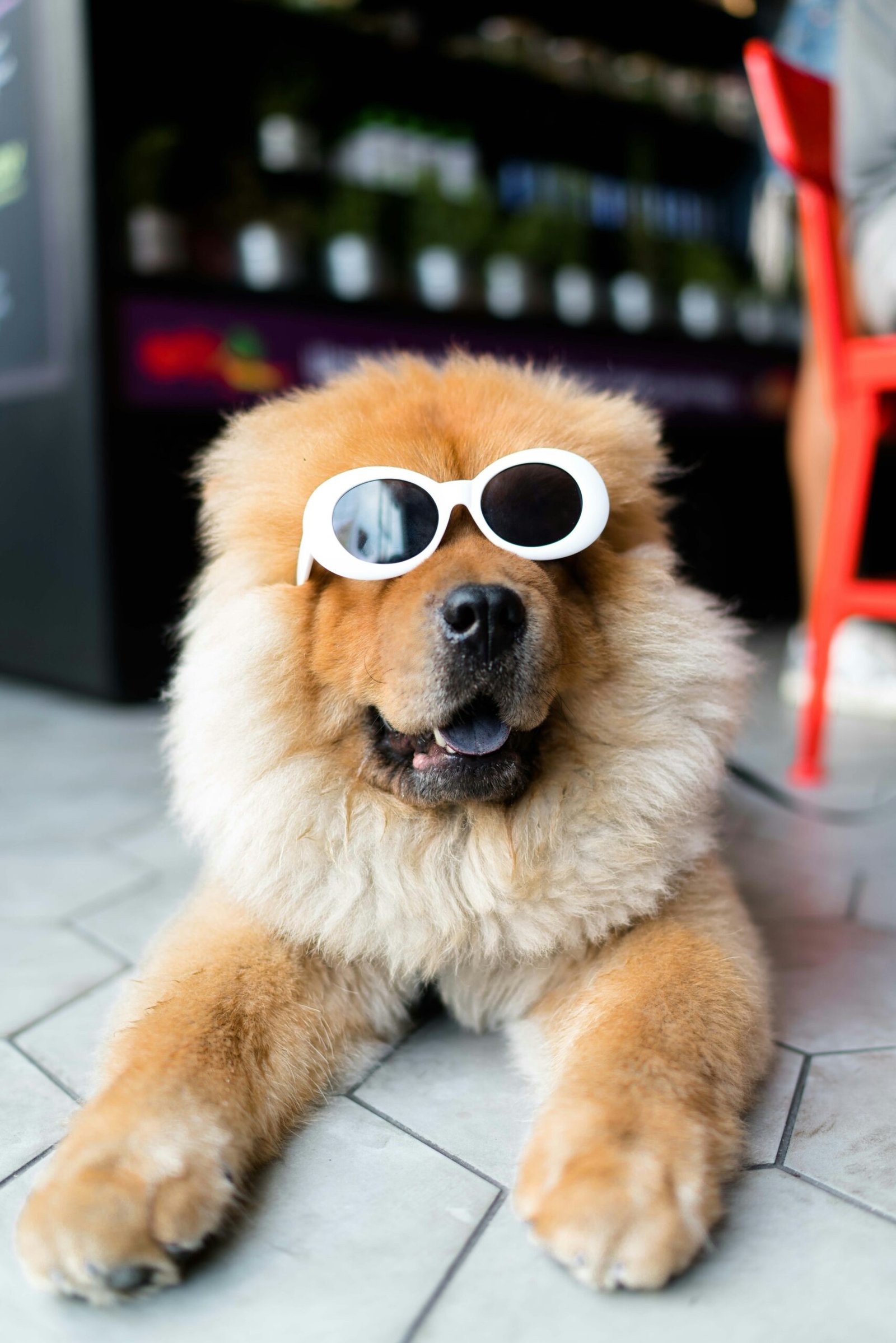Are you tired of dealing with a misbehaving and unhappy dog? Look no further! In this article, you will discover the magic of positive reinforcement and how it can transform your furry friend into a well-behaved and joyful companion. We will specifically explore the power of positive reinforcement crate training, a proven method that not only teaches your dog good behavior but also fosters a strong bond between the two of you. Get ready to embark on a journey towards creating a happy and well-behaved dog using the power of positive reinforcement!

This image is property of images.unsplash.com.
Understanding Positive Reinforcement
What is positive reinforcement?
Positive reinforcement is a training method that focuses on rewarding desired behaviors in order to encourage their repetition. It involves providing something pleasant or rewarding immediately after a dog exhibits a desired behavior. This could be a treat, verbal praise, or a toy. The aim is to create a positive association with the behavior, making the dog more likely to repeat it in the future.
Why is positive reinforcement important for dog training?
Positive reinforcement is important for dog training because it is a humane and effective way to teach dogs new behaviors and reinforce good habits. Unlike punishment-based training methods, positive reinforcement focuses on rewarding desired behaviors rather than punishing unwanted ones. This creates a positive learning environment, strengthens the bond between the owner and the dog, and promotes the dog’s overall well-being and happiness.
The benefits of positive reinforcement
Using positive reinforcement in dog training offers several benefits. It promotes a positive relationship between the dog and the owner, as the dog learns to associate good behavior with rewards and praise. Positive reinforcement also helps build the dog’s confidence and self-esteem, as they are constantly being praised and rewarded for their efforts. Additionally, positive reinforcement is a more humane and gentle approach to training, compared to methods that rely on punishment or aversive techniques. This makes it a great choice for dogs of all ages and temperaments.
Getting Started with Positive Reinforcement
Setting clear training goals
Before beginning any training program, it is essential to set clear training goals. These goals should be specific, measurable, achievable, relevant, and time-bound (SMART goals). For example, if your goal is to teach your dog to sit on command, a SMART goal would be to have your dog consistently respond to the sit command within two weeks. Setting clear goals helps guide your training sessions and allows you to track your dog’s progress effectively.
Choosing the right rewards
In positive reinforcement training, rewards play a crucial role in motivating and reinforcing desired behaviors. When choosing rewards, it is important to consider what motivates your dog the most. For many dogs, food treats are highly effective rewards. Other dogs may prefer praise, petting, or play as rewards. Experiment with different types of rewards to find what works best for your dog. Remember to use high-value rewards for more challenging behaviors or in distracting environments.
Establishing a positive training environment
Creating a positive training environment is essential for successful positive reinforcement training. Find a quiet area in your home where you can conduct training sessions without distractions. Remove any potential sources of fear or discomfort for your dog, such as loud noises or unfamiliar objects. Use positive and encouraging body language and tone of voice to create a welcoming and supportive atmosphere. Remember to keep training sessions short and fun, gradually increasing the duration as your dog’s attention span improves.
Basic Commands and Behaviors
Teaching sit
Teaching your dog to sit is one of the fundamental commands in dog training. Start by holding a treat close to your dog’s nose and raise it slowly above their head. As their head follows the treat, their bottom should naturally lower into a sitting position. Once they are sitting, praise them and give them the treat. Repeat this process several times until your dog begins to associate the command “sit” with the action of sitting. Practice in different locations and gradually phase out the use of treats, replacing them with verbal praise and physical affection as rewards.
Teaching stay
The command “stay” teaches your dog to remain in a certain position until released. Begin by having your dog sit in front of you. Open your palm toward them and give the verbal cue “stay” while taking a step back with a clear and confident body language. If your dog remains in the stay position for a few seconds, return to them, praise and reward them. Gradually increase the distance and duration of the stay, always rewarding your dog for successful stays. Remember to release your dog from the stay command with a verbal cue like “okay” or “release.”
Teaching come
The recall command, or “come,” is essential for keeping your dog safe and under control. Start by getting down to your dog’s level and calling their name followed by the cue “come.” Encourage them to come toward you by using an enthusiastic tone of voice and opening your arms. When your dog comes to you, reward them with praise and a treat. Practice the recall command in a controlled environment before gradually introducing distractions. Always make coming to you a positive experience for your dog by rewarding them generously and avoiding punishment for slow responses.
Teaching leave it
The “leave it” command is used to prevent dogs from picking up or engaging with something they should not. Begin by presenting a low-value item in your closed hand and placing it near your dog’s nose. When your dog shows interest in the item, say “leave it” and wait for them to lose interest and look away from the item. Immediately reward them with praise and a high-value treat. Gradually increase the difficulty by using more tempting items. With practice, your dog will learn to respond to the “leave it” command reliably, helping you keep them safe in various situations.
Teaching drop it
The “drop it” command is useful for getting your dog to release an item from their mouth. Start by offering your dog a toy or object they enjoy playing with. Once they have it in their mouth, show them a treat and use the cue “drop it.” When your dog releases the item, reward them with the treat and immediately give them the toy back as a reward for their cooperation. Practice this command regularly using different toys and objects to generalize the behavior.
Using Positive Reinforcement in Crate Training
Introducing the crate as a positive space
Crate training can provide a safe and comfortable space for your dog, but it is crucial to introduce the crate as a positive space from the beginning. Start by placing the crate in an area where your dog spends a lot of time, near their bed or in a family room. Leave the crate door open and encourage your dog to explore it at their own pace. Place treats, toys, and familiar bedding inside to make it inviting. Avoid forcing your dog into the crate or using it as a form of punishment, as this will create negative associations.
Using treats and praise to reward crate use
Once your dog begins to associate the crate with positive experiences, you can start using treats and praise to reward their use of the crate. Encourage your dog to enter the crate by using treat lures or throwing treats inside and praising them when they go in. Gradually increase the duration your dog spends inside the crate, rewarding them for calm and relaxed behavior. Make sure to never leave your dog in the crate for extended periods without a break, as it should be a space for rest and relaxation, not isolation.
Gradually increasing crate time
As your dog becomes more comfortable with the crate, you can gradually increase the time they spend inside. Start by closing the crate door for a few seconds while you remain present, then gradually increase the duration. Reward your dog with treats and praise for calm behavior while the crate door is closed. Practice leaving the room briefly while your dog is in the crate, gradually building up to longer absences. Remember to provide mental stimulation and physical exercise outside of the crate to ensure your dog’s well-being and prevent confinement-related issues.
Dealing with crate-related challenges
Some dogs may experience crate-related challenges, such as separation anxiety or reluctance to enter the crate. If your dog shows signs of distress while being crated, consult a professional trainer or behaviorist for guidance. They can help you develop a training plan to address the specific challenges your dog is facing. It is important to approach crate training with patience and understanding, tailoring your approach to your dog’s individual needs and comfort level.

This image is property of images.unsplash.com.
Socialization and Positive Reinforcement
The importance of socialization
Socialization is a critical aspect of a dog’s development that involves exposing them to a variety of people, animals, environments, and stimuli. Early and positive socialization helps dogs become well-adjusted and confident, reducing the likelihood of fear, anxiety, and aggression. It is important to expose your dog to different experiences, such as meeting new people and animals, visiting various environments, and encountering different sounds and sights, all in a positive and controlled manner.
Positive reinforcement during socialization
Positive reinforcement plays a crucial role in socialization by rewarding your dog for calm and appropriate behavior in various social situations. When exposing your dog to new experiences, praise and reward them for exhibiting calm and confident behavior. For example, if your dog behaves well when meeting a new dog, reward them with treats and praise. This positive reinforcement helps reinforce positive associations with new experiences and encourages your dog to approach future situations with confidence.
Introducing your dog to new people and animals
When introducing your dog to new people and animals, it is important to prioritize their comfort and safety. Start by allowing your dog to approach new individuals or animals at their own pace, giving them the choice to engage or disengage. Reward your dog for calm and friendly behavior with treats and praise. If your dog shows signs of fear or discomfort, do not force interactions and instead create distance and provide reassurance. Gradually increase exposure over time, always prioritizing positive experiences and rewarding your dog’s appropriate behavior.
Overcoming fear and anxiety through positive reinforcement
If your dog exhibits fear or anxiety in certain situations, positive reinforcement can help them overcome these challenges. Start by identifying the triggers that cause fear or anxiety in your dog and create a behavior modification plan with the help of a professional trainer. This plan will involve gradually exposing your dog to the triggers in a controlled and positive manner, rewarding them for calm and confident behavior. With consistency and patience, positive reinforcement can help your dog develop more positive associations and reduce their fear and anxiety over time.
Addressing Behavioral Issues
Understanding the root of behavioral issues
Addressing behavioral issues requires understanding the root causes behind them. Many behavioral issues stem from fear, anxiety, lack of socialization, or previous negative experiences. It is important to observe your dog’s behavior and consult with a professional if needed to gain insight into the underlying causes of their unwanted behaviors. By addressing the root cause, you can tailor your training approach and use positive reinforcement to effectively modify these behaviors.
Using positive reinforcement to correct unwanted behaviors
Positive reinforcement can be a powerful tool in correcting unwanted behaviors. Instead of punishing your dog for unwanted behaviors, focus on redirecting their attention and rewarding alternative behaviors. For example, if your dog jumps on guests, teach them to sit or greet politely instead. Reward them for sitting or calm behavior, gradually decreasing the rewards as the desired behaviors become more consistent. By consistently reinforcing the desired behaviors and providing positive alternatives, your dog will learn to make better choices.
Dealing with aggression in a positive way
Addressing aggression requires a cautious and responsible approach. Aggression can have various causes, such as fear, pain, or resource guarding, and should be addressed with professional guidance. Positive reinforcement can be used to modify aggressive behaviors by rewarding alternative behaviors and teaching your dog to associate positive experiences with previously triggering situations. This process requires patience, consistency, and the help of a trained professional to ensure the safety of both your dog and others.
Addressing separation anxiety through positive reinforcement
Separation anxiety is a common issue for dogs and can be distressing for both the dog and the owner. Positive reinforcement can be an effective approach to address separation anxiety by gradually desensitizing your dog to your departures and rewarding calm behavior. Start by practicing short departures and gradually increase the duration, rewarding your dog for staying calm and relaxed. Provide mental and physical stimulation before your departures, and consider using puzzle toys or interactive feeders to keep your dog occupied. If necessary, consult a professional for tailored advice and guidance.

This image is property of images.unsplash.com.
Positive Reinforcement in Leash Training
Choosing the right leash and harness
When it comes to leash training, choosing the right equipment is essential. The leash should be sturdy and comfortable to hold, with an appropriate length for your training needs. Consider using a harness instead of a collar if your dog pulls excessively or has respiratory issues. A well-fitting harness distributes the force more evenly, reducing the risk of injury or discomfort. Always select equipment that suits your dog’s size, breed, and individual needs.
Using treats and praise to reward loose leash walking
Rewarding loose leash walking is crucial for teaching your dog to walk calmly on a leash. Start by rewarding your dog for walking next to you with a loose leash. Use treats or verbal praise to reinforce this behavior. Whenever your dog starts to pull, stop walking and wait for them to come back to your side. Reward them for returning to the desired position. Be consistent with the rewards and gradually increase the distance and duration of walking with a loose leash. Using a consistent reward system will help your dog understand what is expected of them.
Managing pulling and leash aggression with positive reinforcement
If your dog pulls on the leash or exhibits leash aggression, positive reinforcement can help manage these behaviors. Teach your dog the “heel” command, where they walk calmly by your side without pulling. Use treats, praise, and rewarding play to reinforce the desired behavior. When it comes to leash aggression, it is important to consult with a professional trainer who can guide you through specific techniques for addressing this behavior. With consistent training and rewarding positive behaviors, you can improve leash manners and create a more pleasurable walking experience for both you and your dog.
Overcoming distractions during walks
Distractions can be challenging while walking your dog, but positive reinforcement can help maintain focus and control. Start by practicing in a low-distraction environment and gradually introduce distractions as your dog becomes more proficient. Reward your dog with treats and praise when they stay focused and respond to your cues despite the distractions. If your dog becomes overly aroused or distracted, redirect their attention with a treat or by changing direction. With time and patience, positive reinforcement can help your dog stay focused and ignore distractions during walks.
Advanced Training and Tricks
Teaching advanced commands
Once your dog has mastered the basic commands, you can move on to teaching them more advanced commands. Positive reinforcement remains a key tool in teaching these commands. Break down complex behaviors into smaller steps and reward your dog for each successful progression. Use treats, praise, and clicker training to mark and reinforce the desired behavior. Be patient and consistent, adjusting your training approach to suit your dog’s learning style and abilities.
Introducing fun tricks through positive reinforcement
Beyond basic commands, teaching your dog fun tricks can be an enjoyable way to strengthen the bond between you and your dog. Tricks like rolling over, playing dead, or fetching specific items can be taught using positive reinforcement. Break down each trick into small, achievable steps, and reward your dog for every successful attempt. Make training sessions fun and engaging, using toys, treats, and praise as rewards. With positive reinforcement and regular practice, your dog can impress family and friends with their repertoire of tricks.
The role of clicker training in advanced training
Clicker training is a popular tool in advanced training because it provides a clear and consistent signal to your dog. The clicking sound of the clicker marks the precise moment your dog performs the desired behavior, indicating that a reward is coming. Clicker training can be especially useful for teaching complex behaviors or shaping behaviors that require precision. Pair the clicker with treats and praise to reinforce the behavior and gradually phase out the clicker as the behavior becomes reliable. Clicker training can enhance communication and accelerate your dog’s learning during advanced training sessions.
Consistency and Patience in Positive Reinforcement
The importance of consistency in training
Consistency is crucial in positive reinforcement training. Dogs thrive in a consistent and predictable environment, so it is important to use the same cues, rewards, and rules consistently. Reinforce desired behaviors each time they occur, and avoid rewarding unwanted behaviors. Consistency helps your dog understand what is expected of them and reinforces the positive associations with specific behaviors. By being consistent, you set the foundation for effective training and long-term success.
Developing patience as a dog owner
Patience is essential when using positive reinforcement to train your dog. Remember that learning takes time, and each dog progresses at their own pace. Some behaviors may be quick to learn, while others may require more time and repetition. Avoid becoming frustrated or disheartened when progress seems slow. Instead, celebrate the small victories and focus on the positive aspects of your dog’s behavior. With patience and consistent training, your dog will continue to improve and grow.
Understanding setbacks and how to overcome them
Setbacks are a natural part of the training process. Your dog may occasionally exhibit unwanted behaviors or lose progress in certain areas. Remember that setbacks are temporary and can often be overcome with patience and perseverance. Analyze the possible reasons behind the setback, such as changes in routine, increased distractions, or inconsistent training. Adjust your training approach, reinforce the desired behaviors, and manage any challenges or triggers that may have caused the setback. With time and positive reinforcement, your dog will bounce back and continue to make progress.
Professional Support for Positive Reinforcement
The role of professional trainers in positive reinforcement
Professional trainers play a vital role in helping dog owners navigate the world of positive reinforcement training. They have the knowledge and experience to assess a dog’s individual needs and develop a customized training plan. Professional trainers can provide guidance on specific behaviors, address challenges, and troubleshoot any issues that arise during training. They offer valuable insights and expertise, ensuring that you and your dog have the support needed to succeed.
Choosing a qualified positive reinforcement trainer
When selecting a positive reinforcement trainer, it is important to choose a qualified and reputable professional. Look for trainers who have certifications, memberships in professional organizations, or relevant education and experience. Ask for recommendations from other dog owners or local pet professionals. Take the time to interview potential trainers and ask about their training philosophy, methods, and success stories. A qualified trainer will have a deep understanding of positive reinforcement techniques and will prioritize the well-being and happiness of your dog.
Workshops and classes for reinforcement techniques
Workshops and classes can be valuable resources for furthering your knowledge and skills in positive reinforcement training. Look for classes that focus on specific behaviors or challenges you want to address. These opportunities allow you to learn from experienced trainers and interact with other dog owners facing similar training goals. Workshops and classes can provide hands-on practice, feedback, and tailored guidance to help you continue your positive reinforcement training journey.
In conclusion, positive reinforcement is a powerful and effective training method that can create a happy and well-behaved dog. By understanding the principles of positive reinforcement, setting clear goals, choosing the right rewards, and establishing a positive training environment, you can lay the foundation for successful training. Whether teaching basic commands, addressing behavioral issues, or advancing to more complex training, positive reinforcement remains an essential tool. With consistency, patience, and professional support, you can create a strong bond with your dog and achieve long-lasting behavioral results.
